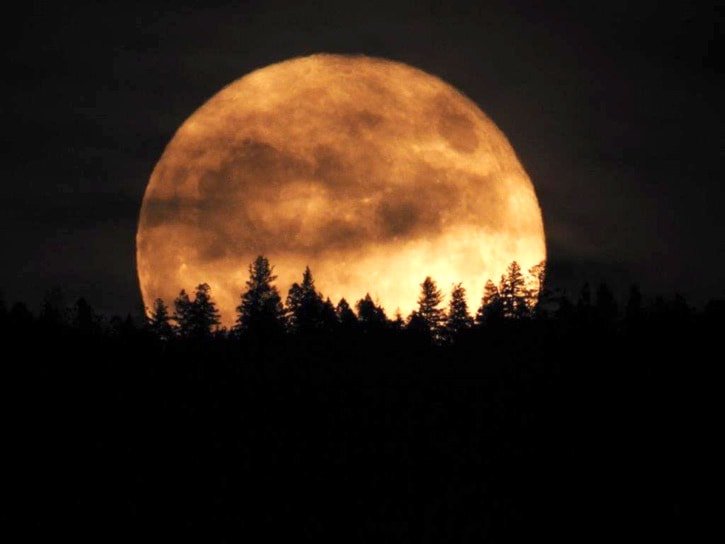On the Nov. 14 we had a Supermoon.
The Moon happened to be Full at the time it was at the point in its orbit where it was closest to Earth. These events are a bit over-hyped because the Moon only looks about 14 per cent larger, which is hard to see without some sort of measuring instrument. However, when we add the Moon looks bigger when near the horizon illusion, the rising of a Supermoon can be spectacular.
The Moon orbits the Earth in about 27 days. Its path is not quite circular. There is a point in its orbit where it is at its closest to Earth (perigee) and on the opposite side of its orbit, a point where it is at its furthest (apogee). Thanks to the Sun and the other planets tugging at the Moon, its perigee varies between 356,400 and 370,000 km, and its apogee between 404,000 and 406,000 kilometres. The most super Supermoon we can get is when the Moon is at its absolute closest, 356,400 km.
The Moon is Full when the Sun, Earth and Moon are roughly in line, so we see the Moon lit full-face with the sunlight coming from behind us. If the three were exactly in line the Moon would pass through the Earthís shadow, and we would be enjoying an ìeclipse of the Moonî.
To get a Supermoon the Moonís orbit has to be oriented so that the Moon happens to be at perigee at the time it is Full. The most super Supermoons happen when the perigee is at the minimum value of its range ñ 356,400km, which was the case on the Nov. 14. Although Supermoons donít look dramatically bigger than other Full Moons there is a more visible consequence: exceptionally high tides.
Our ocean tides are caused mainly by the Moon, with a smaller contribution by the Sun. The Moonís gravity pulls at the Earth and its oceans. Because the ocean on the side of Earth facing the Moon is a little closer to the Moon than the body of the Earth, and is far less rigid, the water is pulled up into a big bump. Similarly, the body of the Earth is closer to the Moon than the water on the far side of the Earth, and is pulled away from it, leaving a second bump of seawater. As the Earth rotates through these bumps of ocean, we experience the tides. The Sun does the same thing, but since it is much further away, the effect is less. When the Sun, Earth and Moon are in line, that is, when the Moon is New or Full, their tidal tugs add together and we get bigger tides, which we call ìspring tidesî. When the Sun and Moon are pulling at right angles, and the Moon is at the First or Last Quarter phases, they partially cancel each other and we get much smaller tides (neap tides). At the time of a Supermoon, the Sun, Earth and Moon are in line, so we get a "spring tide," and since the Moon is closer to the Earth and its gravitational tug is stronger, we get a bigger one.
The Earth has to move its seabed and continents through these tidal bumps every day, They act as a brake, slowing our worldís rotation, making the day lengthen by about 1.7 milliseconds every century. The Earthís pushing at the bumps drags them forward a little, so they get a bit ahead of the Moon. Just as the Moon pulls at the bumps, the bumps pull at the Moon, so the Earthís dragging them forward is transmitted to the Moon, making it move a tiny bit faster. This acceleration moves the Moonís orbit outwards. As it gets further and further away the Moon will look smaller in the sky. Supermoons will gradually become less super. In 500 million years or so the Moon will have moved far enough away for it to no longer be large enough to cover the solar disc. This will make solar eclipses, one of the most spectacular astronomical events, a thing of the past.
Venus is very low in the southwest after sunset. Look for a very bright, starlike object, shining steadily. Mars is low in the Southwest in the evening. Jupiter rises in the early hours. The Moon will be New on the Nov. 29.
Ken Tapping is an astronomer with the National Research Council's Dominion Radio Astrophysical Observatory, Penticton.
